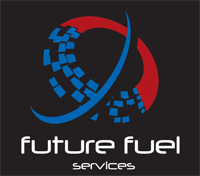Tank and Line Testing: How Fuel Lines are Tested in Petrol Stations
21 June 2023Discover the thorough process of testing fuel lines in petrol stations. Ensure safety and compliance. Expert tank and line testing services for peace of mind.
Petrol stations offer fuel and other products that vehicle owners need. And for these places to operate effectively, they would integrate components that can store, monitor, and dispense fuel optimally.
The fuel line is one key component of petrol stations that should always be assessed and tested. Fuel lines are essential for the safe and efficient operation of petrol stations. After all, they help in transporting fuel from storage tanks to dispensers. They also help prevent leaks, spills, and other hazardous incidents.
To ensure that the fuel lines are functioning correctly and not leaking, they must be subjected to a variety of testing procedures at regular intervals. Here are some ways fuel lines can be tested in petrol stations.
Visual Inspection
One way to test fuel lines is to inspect them visually. A trained technician will inspect the fuel lines for any noticeable signs of wear or damage like cracks or corrosion. This type of inspection will also look for signs of leaks like stains or puddles of fuel around the fuel lines. The hired technician will likewise check the fuel lines’ fittings and connections to ensure they are properly tightened and that there are no signs of damage or leaks.
Pressure Testing
Pressure testing is another common method of testing fuel lines in petrol stations. It involves applying pressure to the fuel lines to check if they can withstand the pressure required to dispense fuel. During a pressure test, the fuel lines are disconnected from the dispensers and plugged in. The technician then uses a special pressure testing device to apply pressure to the fuel lines, which might be up to 3 times the operating pressure of the dispensers. The pressure is then held for a specified time to ensure the lines can hold the pressure without leaking. If the fuel lines do not hold the pressure, they may be already damaged.
Electronic Line Leak Detection
Electronic line leak detection is a method of testing fuel lines that can be sophisticated. It entails the installation of a specialised electronic monitoring system that can detect leaks in the fuel lines by measuring the amount of fuel present at various points in the system. The system is often installed in the underground piping, while the sensors are placed at strategic points along the fuel lines. These sensors measure the amount of fuel present at each point. If there is a significant difference in the measurements, it means that a leak is present in the fuel line. This highly accurate testing method can detect even small leaks in the fuel lines.
Interstitial Monitoring
Finally, interstitial monitoring is a method of testing fuel lines that involve the installation of a secondary containment system. This system is comprised of an outer layer of piping that surrounds the fuel lines and works as a backup in case of a leak. Once a leak is present in the fuel lines, the fuel will be contained within the secondary piping, which prevents it from leaking into the environment. Interstitial monitoring involves regularly checking the secondary piping for signs of fuel, which may indicate a leak in the fuel lines.
Fuel lines in petrol stations must be subjected to a variety of line testing procedures to ensure they are functioning correctly and not leaking. These previously stated testing procedures are critical to maintaining the safety and environmental integrity of petrol stations and preventing the release of fuel into the environment.
Optimized by: Netwizard SEO

